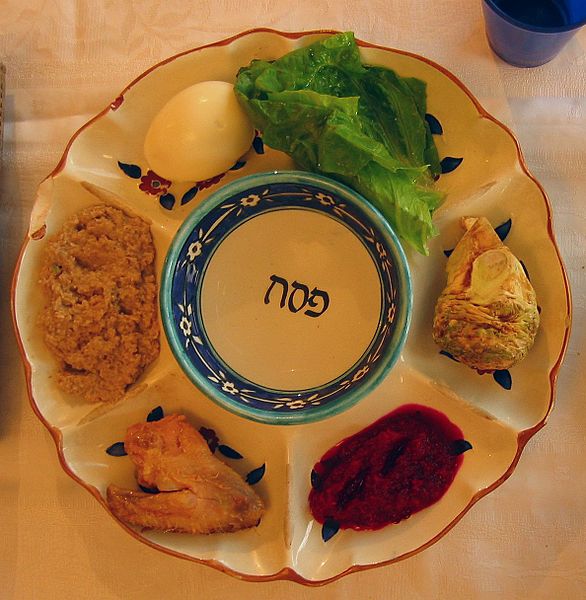9 Apr. Jesus gives new meaning to bread and wine
"While they were eating [their Passover supper], Jesus took some bread and thanked God for it and broke it."
"Then he gave it to his followers and said, 'Take it; this is my body.'"
"Then Jesus took a cup [of wine] and thanked God for it and gave it to the followers, and they all drank from the cup."
"Then Jesus said, 'This is my blood which is the new agreement [literally, the 'new covenant' or 'New Testament'] that God makes with his people.'"
"'This blood is poured out for many. I tell you the truth, I will not drink of this fruit of the vine [i.e. wine] again until that day when I drink it new in the kingdom of God.'"
(Mark 14:22-25)

When Jesus and his twelve close followers were eating their Passover supper together (in the guest room which was probably above John Mark's family home in Jerusalem), Jesus took some of the unleavened bread, gave thanks and broke it into pieces.
He gave a piece of the broken bread to each disciple as a symbol of his own body, which was to be broken on the cross the following day, and he said to them “Take it; this is my body.” (Mark 14:22)
Then he took the communal cup of wine, gave thanks to God, and passed it round his friends, saying, “This is my blood which is the new agreement that God makes with his people. This blood is poured out for many.” (Mark 14:24)
At a Passover meal (a 'Seder' ceremony), Jewish families celebrate God’s deliverance of their Jewish ancestors from slavery in Egypt, when God passed over the houses of the Israelites without killing their firstborn sons (see Exodus 12:21-30). Blood is seen as a sign of protection (see Exodus 12:13), and a roasted lamb shank is eaten to represent the Passover lamb whose blood was smeared on the doorframes to protect the Israelites from death.
Family members and guests dip their hands into a dish of 'haroseth' – a sugary mixture of apple, walnuts and cinnamon, shared symbolically with friends at Passover to sweeten the bitter memories of slavery in Egypt.
Pieces of unleavened bread (matzos) are also eaten to remember that, at the first Passover, the Israelites didn’t have time to let their bread rise before escaping from Egypt.
During the Passover supper, three pieces of unleavened bread are broken symbolically. The middle piece (the 'Aphikomen') – representing the Passover lamb – is broken and shared towards the end of the supper. Jesus probably broke and shared this piece of bread to show that he would be killed (just like the Passover lamb) to save people from death and to give them eternal life (see John 1:29).
During the supper, four cups or ‘chalices’ of wine are symbolically passed round, reminding people of God’s four promises to rescue the Jews from Egypt (see Exodus 6:6-7).
The first cup – the Cup of Holiness – is accompanied by an opening blessing (the 'Kiddush') and by ceremonial handwashing. After a dish of bitter herbs ('Karpas') is passed round, the second cup – the 'Cup of Instruction' – is accompanied by reading the Biblical narrative of the Passover (the 'Maggid') and by singing the 'Little Hallel' (Psalm 113).
When Jesus took the cup "after supper", this probably refers to the third cup (the 'Cup of Redemption') which symbolises God’s promise to rescue his people from wrongdoing, to forgive them and to restore a loving relationship with them.
The Seder ceremony concludes by drinking from the fourth cup – the 'Cup of Hope' – which looks to the coming of God's 'Messiah' (the 'Christ' or 'anointed one') – and the singing of the Great Hallel (Psalms 114 to 118).
Throughout the supper, another cup – the 'Cup of Elijah' – stands at the centre of the table. This cup is only to be drunk from when the prophet Elijah appears as a forerunner of the Messiah, the Christ (see Malachi 4:5 & Matthew 11:7-14).
The photo (by Gilabrand) shows a Passover plate with haroseth and a lamb shank. The bowl of salted water (in the centre of the plate) represents the bitter tears shed by the Israelites in Egypt.
You can read more about Jesus's 'Last Supper' @ https://www.thebiblejourney.org/…/6-jesuss…/the-last-supper/
